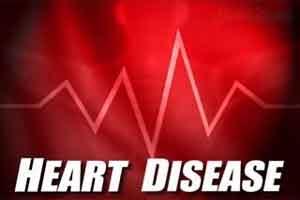- Home
- Editorial
- News
- Practice Guidelines
- Anesthesiology Guidelines
- Cancer Guidelines
- Cardiac Sciences Guidelines
- Critical Care Guidelines
- Dentistry Guidelines
- Dermatology Guidelines
- Diabetes and Endo Guidelines
- Diagnostics Guidelines
- ENT Guidelines
- Featured Practice Guidelines
- Gastroenterology Guidelines
- Geriatrics Guidelines
- Medicine Guidelines
- Nephrology Guidelines
- Neurosciences Guidelines
- Obs and Gynae Guidelines
- Ophthalmology Guidelines
- Orthopaedics Guidelines
- Paediatrics Guidelines
- Psychiatry Guidelines
- Pulmonology Guidelines
- Radiology Guidelines
- Surgery Guidelines
- Urology Guidelines
Preservation of muscle mass may ward off future heart attack and stoke

Muscular tissue volume starts to progressively ebb away from the mid-30s onwards at a rate of around 3% every decade. It has an active role in various metabolic processes, and its decline is associated with, among other things, disability and a heightened risk of death.
Maintaining muscle tissue volume may be an effective means of promoting cardiovascular health and warding off heart attacks and strokes later on, at least in men, conclude the researchers in a new study. The amount of lean muscle a healthy person has in middle age is linked to their future risk of heart disease, suggests research in the Journal of Epidemiology & Community Health.
Studies in the past indicate that muscle mass is associated with heart attack/stroke risk, but these studies have focused on the health outcomes of people with existing heart disease. In the present study, the researchers wanted to find out if muscle mass in middle age might also predict the subsequent risk of poor cardiovascular health in people without heart disease.
So they monitored the number of new cases of cardiovascular disease arising over a period of 10 years in 2020 members of the public, 1019 of whom were aged 45+ in 2001-2.
None of these older men and women had heart disease at the start of the study, which is when they provided lifestyle information, including on how closely they followed a Mediterranean diet, and how much physical activity they did.
Levels of circulating blood fats and indicators of inflammation were measured, as were blood pressure and weight (BMI)--all of which are potential risk factors for heart disease. Skeletal muscle mass was calculated using previously published data and adjusted for weight and height (BMI).
During the 10 year monitoring period, 272 (just under 27%) fatal and non-fatal cases of cardiovascular disease, including stroke and minor stroke, arose among the 1019 middle-aged participants.
Men were around four times as likely to develop cardiovascular disease as women, after accounting for potentially influential factors. And muscle mass volume was associated with cardiovascular disease risk.
The fewest cases occurred in the third of people with the highest muscle volume compared with those in the lowest range at the start of the monitoring period. Those with the highest muscle tissue volume were 81% less likely to have a heart attack or stroke, for example.
The prevalence of high blood pressure, diabetes, and obesity--all risk factors for cardiovascular disease--were all lower among those with the highest muscle volume.
And those in this group tended to be younger, male, and smokers. And they were also more physically active, had higher levels of income and education, and to eat a Mediterranean-style diet.
But when the further more detailed analysis was carried out, muscle volume remained significantly associated with lower cardiovascular disease risk, irrespective of diet, household income, and educational attainment, as well as known risk factors, such as diabetes among those aged 45 and older, but only among men.
The gender disparity may be partly explained by higher muscle volume in men to start with and hormonal differences between the sexes in the ageing process, suggest the researchers.
This is an observational study, and as such, can’t establish the cause. Nevertheless, the results “point to the importance of [skeletal muscle mass] preservation in relation to [cardiovascular disease] risk,” they write.
And they suggest that periodic physical activity, including resistance training, and a diet rich in protein, may help preserve lean muscle mass as people age.
Journal Information: Journal of Epidemiology & Community Health
For more details click on the link: http://jech.bmj.com/lookup/

Disclaimer: This site is primarily intended for healthcare professionals. Any content/information on this website does not replace the advice of medical and/or health professionals and should not be construed as medical/diagnostic advice/endorsement or prescription. Use of this site is subject to our terms of use, privacy policy, advertisement policy. © 2020 Minerva Medical Treatment Pvt Ltd